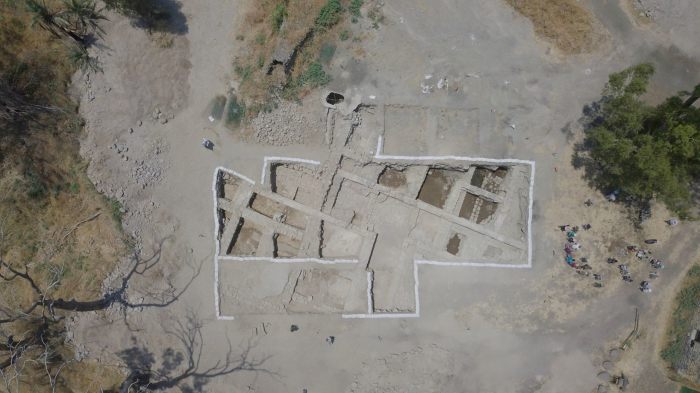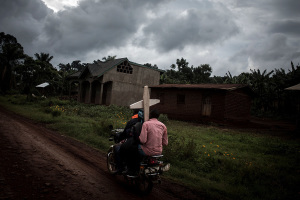Archaeologists discover mosaic with inscription to Peter that may point to location of his home

Archaeologists say they have discovered an inscription that may further indicate the location of the biblical town identified as the home of the Apostles Peter and Andrew.
Archaeologists announced last week that, while digging various holes and channels in a series of excavations, they uncovered an ancient mosaic with a large Greek inscription regarding the Peter and Andrew of the New Testament.
Some say the mosaic may confirm the theory that the structure — commonly called the "Church of the Apostles" — was once built over a living space that belonged to the apostles.
The archaeologists who made the discovery are from Kinneret College in Israel and New York's Nyack College, led by professors Mordechai Aviam and Steven Notley.
The inscription was translated by Professor Leah Di Segni of Hebrew University and Professor Yaakov Ashkenazi of Kinneret College.
The inscription refers to a donor, "Constantine, the servant of Christ," and mentions a petition for intercession by St. Peter, "chief and commander of the heavenly apostles."
"The title' chief and commander of the apostles' is routinely used by Byzantine Christian writers to refer to the Apostle Peter," said Notley in a statement.
"This discovery is our strongest indicator that Peter had a special association with the basilica, and it was likely dedicated to him. Since Byzantine Christian tradition routinely identified Peter's home in Bethsaida, and not in Capernaum, as is often thought today, it seems likely that the basilica commemorates his house."
The inscription is framed with a circular medallion and composed of two lines of black tesserae. It forms part of a larger mosaic floor in the church's sacristy, which is partially adorned by floral designs.
The discovery is a result of the El Araj Excavation Project, a joint initiative of the Kinneret Institute for Galilee Archeology at Kinneret College and Nyack College.
The excavation is sponsored by the Center for the Study of Ancient Judaism and Christian Origins (CSAJCO), the Museum of the Bible, the Lanier Theological Library Foundation and the Hong Kong-based HaDavar Yeshiva.
"One of the goals of this dig was to check whether we have at the site a layer from the 1st century, which will allow us to suggest a better candidate for the identification of Biblical Bethsaida," said Aviam in a statement.
"Not only did we find significant remains from this period, but we also found this important church and the monastery around it."
The Roman remains that have also been excavated from the basilica may prove the testimony of Flavius Josephus. He believed the village was turned into a town called Julias, thought to have existed until around the third century A.D.
As archeologists review the findings, they believe this further links el Araj/Beit haBek to the ancient Jewish village of Bethsaida.
The basilica church will be cleaned, and excavations will continue at the start of October.
In 2017, researchers with Kinneret College said they believe they had found the remains of Julias.
Bethsaida is identified in John 1:44 as the hometown of Philip, Andrew and Peter.




























